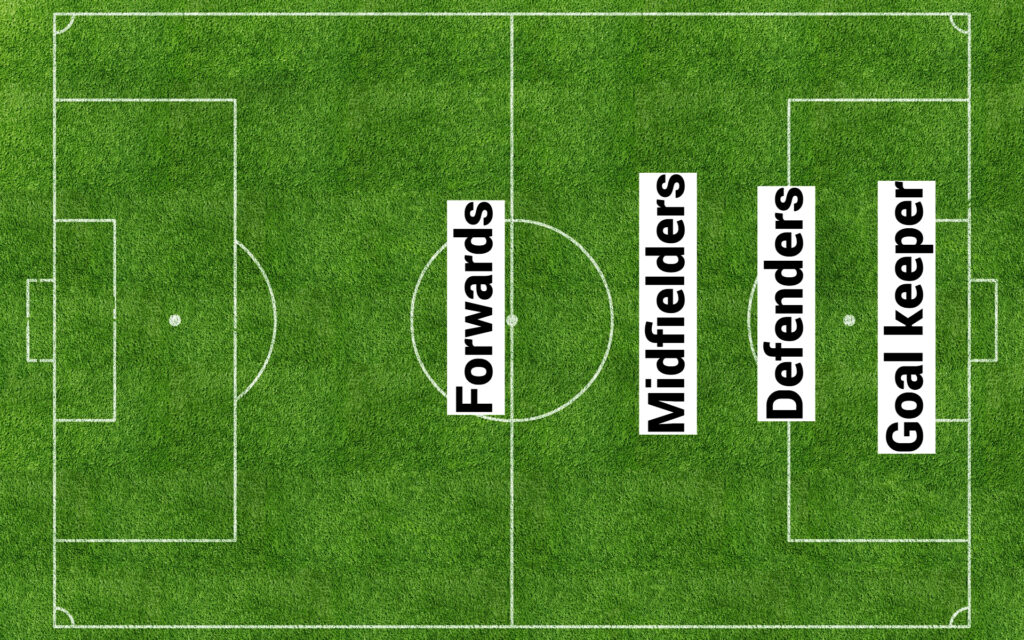Hurling rules and skills —A guideline for beginners
Hurling is not a game but it is a high-rooted culture in Irish history, is a thrilling and prehistoric sport that combines skill, speed, and strength. It includes a unique place in the hearts of the Irish people and has gained acknowledgment worldwide for its fast-paced nature and rich tradition. In this thrilling game, players wholeheartedly engage themselves by making use of a small leather ball called a sliotar and a specially crafted stick known as a Hurley. The objective is simple, to get challenges and earn score points. How hurling is played and hurling rules.
Following are the main points of hurling to play:
Teams and their Positions
Hurling is a captivating and ancient Gaelic sport that requires a team of 15 skilled players, each assuming specific roles on the field. The team’s formation includes a goalkeeper, defenders, midfielders, and forwards, all collaborating harmoniously to advance the ball and ultimately score points. It’s a high-energy sport that demands exceptional teamwork, agility, and precise execution from each player.
In the sport of hurling, which is a traditional Irish game, players use a wooden stick known as a hurley to strike a small leather ball called a sliotar. The objective is to hit the sliotar through the opposing team’s goalposts to score points. Specific rules govern hurling to ensure fairness and safety for all players involved, contributing to the unique and competitive nature of the game. How hurling is played and hurling rules. A guideline for beginners.
- Goalkeepers: guard the goalposts.
- Defenders: protect the goal area.
- Midfielders: play an intermediary role between defense and offense.
- Forwards: Aim to earn points by attacking the opposing team’s goal.

Equipment
In the thrilling and fast-paced sport of hurling, the sliotar takes center stage as the pivotal piece of equipment. This small, hard leather ball is essential to the game’s flow and rhythm, serving as the focal point of player interaction. Using a curved wooden stick, often crafted from ash and known as the Hurley, players skillfully strike the sliotar, driving it across the field with impressive speed and precision. How hurling is played and hurling rules.
To mitigate risks and ensure the safety of all participants, players must wear helmets. We highly encourage individuals to comply with this safety measure to avoid any potential injuries. The helmets protect against potential head injuries caused by high-speed impacts on the sliotar. How hurling is played and hurling rules. How hurling is played and hurling rules. A guideline for beginners.
Field
In the traditional Irish sport of hurling, players compete on a large rectangular field with goalposts at each end, reminiscent of the layout of a soccer field.
To successfully score a goal in hurling, it’s crucial to carefully aim the sliotar for the space between the uprights and just under the crossbar on the goal lines. This precision is essential for maximizing the chance of scoring in this fast-paced and exciting sport.
Scoring
In the sport of hurling, a team can earn three points by scoring a goal, which requires a player to skillfully strike the sliotar (the ball used in hurling) into the opponent’s goal. This action showcases the precise and powerful skill set of the player and is a significant scoring opportunity in the game of hurling.
In the sport of hurling, a player can score a point by striking the sliotar, or ball, over the opposing team’s crossbar and between the uprights. This impressive feat of skill and precision is rewarded with a valuable point for the player’s team. Hurling Rules and Skills — A guideline for beginners.
Gameplay
At the start of Hurling, the goalkeeper hits the sliotar into play. When playing the game of hurling, participants employ a wooden stick known as a Hurley to strike, control, and distribute the sliotar while in motion. They maneuver to evade opposing players and orchestrate chances to score.
Tackling is basic, as players use Hurley or bodies to dispossess opponents and gain control of the sliotar. Skillful use of the Hurley sets the best players apart. They can grasp the sliotar in their hand and hit it or hit it along the ground.
Rules
There are specific rules governing player procedures to ensure fair play and safety. The rules strictly forbid players from directly picking up the ball with their hands. Instead, they must rely on their Hurley to play the ball. During the controlling of the sliotar, players can take it on their Hurley for a maximum of four steps, after which they must let loose the ball or bounce it on the Hurley to continue playing. Hurling Rules and Skills — A guideline for beginners.
Duration
The hurling game consists of two halves, usually it lasts for 35–40 minutes each, making it a highly passionate and demanding sport. The game’s fast-paced nature owes much to the short duration of each half, which demands players to sustain their peak performance levels throughout the game.
Cultural Significance
Ireland’s cultural fabric deeply intertwines with hurling, making it more than just a sport in the nation. The sport has historical roots, with references to related games dating back thousands of years.
Hurling matches are momentous events that attract passionate support from communities, particularly at the county/province level. The hurling Championship in Ireland is one of the most important tournaments in the sport, which commands the nation’s attention and showcases the highest level of skill.
The cultural significance extends beyond the playing field, with traditional music, dance, and art often knotted with hurling events. The game serves as a symptom of Irish identity and flexibility, embodying the spirit of community, competition, and tradition.
Conclusion
Hurling is an exhilarating sport that boasts a rich history and cultural significance in this country. It embodies the enduring spirit of games and is a true testament to the strength, skill, and determination of its players. The hurling sport is an exciting and breathtaking show of skill, strategy, and physical ability that gets both players and spectators alike.
Hurling is a unique sport that has captivated people with its rich heritage and cultural significance. Despite the passage of time, it has remained true to its roots and continues to attract more fans and players alike, making it a thriving sport with a bright future ahead.
Hurling rules that are necessary for playing
Without a shadow of a doubt, hurling stands out as one of the most thrilling and captivating sports played worldwide. The combination of agility, skill, and physicality involved in this unique game makes it a true spectacle for both players and spectators alike. Here are the rules for hurling:
Helmets
For the safety and well-being of all participants, it is mandatory for individuals engaging in this activity to wear protective helmets equipped with faceguards. This safety measure is essential to minimize any potential risks and ensure a secure environment for everyone involved.
Objective
In the sport of football, players can earn points in two ways. The first way is by scoring a goal, which involves successfully getting the ball into the opponent’s net and is worth 3 points. When playing football, a team can score by kicking the ball over the crossbar and between the goalposts, which is known as a field goal. A field goal is worth 1 point and can be attempted from any point on the field, making it a strategic play in certain situations.
Teams
The game requires teamwork and strategy. Each team assigns specific positions, such as forwards, midfielders, and defenders, to its 15. By working together and utilizing each player’s unique skills and strengths, the team can achieve success on the field.
Game Duration
During every training session, the coaches split the time into two halves, with each half lasting 35 minutes. This means that each session has a total length of 70 minutes.
Starting Play
At the beginning of the game, the match kicks off with a throw-in being taken from the center of the field. This throw-in serves as the starting point of the game, signifying the beginning of the action on the field.
Scoring
In a game, a team can earn points in a few different ways. One way is by successfully kicking the ball over the crossbar. Which is known as a point-after attempt and is worth 1 point. Another way is by kicking the ball into the goal, which is worth 3 points. Both of these scoring methods are important for a team’s success in the game.
Sideline Puck
When the ball goes out of play over the sidelines in a game. Which results in the award of a sideline puck to the opposing team. This means that the team that did not touch the ball last before it went out of bounds. The referee will give possession of the ball at the sideline for a restart to the team that didn’t shoot wide of the target.
45-Meter Free Puck
After several infractions, a penalty puck has been awarded free of charge from the 45-meter line. This penalty kick gives the team an opportunity to take a direct shot. At the goal without any opposing players attempting to block or intercept the shot.
Wide in-game
If a player fails to score a goal because the ball is shot wide of the target, the referee will award a puck out. A puck out grants possession to the opposing team and allows them to restart play from their own goal area.
Fouls
The game of hurling often involves various rule violations, such as holding, tripping, and striking. When these infractions occur, the referee awards free pucks to the opposing team as a consequence.
Penalties
In the realm of sports, a serious infraction committed by a player results in a penalty. Which in turn awards the opposing a free shot from a predetermined distance. In many different sports, it is common to see the practice of using rules and regulations to ensure fair play. This helps to maintain an environment of fairness and sportsmanship.
Square Ball
If a player from the attacking team enters the small square in front of the goal before the ball arrives, the referee will declare the goal invalid.
Advantage Rule
The referee can exercise discretion to allow play to continue. If the team that committed the foul would otherwise benefit from the stoppage, and if the fouled team has a clear opportunity to score.
Substitutions
Spectators can occupy specific areas along the sidelines.
Yellow and Red Cards
In the context of sportsmanship, the colors yellow and red serve as indicators of warning and severity, respectively. Specifically, a yellow card serves as a cautionary measure, while a red card denotes a serious offense that results in ejection from the game.
Restart after Score
After a momentary break, the game springs back to life as the goalkeeper. The defending team executes a powerful kick to put the ball back into play and resume the game.
